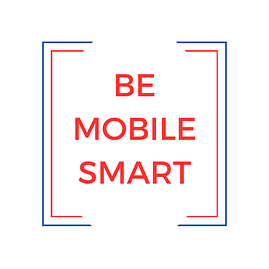
Dear Ms. Smartphone: My son and daughter-in- law live in a hilly, woody area, and their cell phone service can be spotty. Sometimes they get a good signal, and sometimes there is none at all. When I call them, the line often goes dead. I am concerned for them since it is fire season and they might need to evacuate. On top of that, they are expecting a first baby and might need to get help quickly. I am used to living out here and mostly prepared, but I don’t think they are so ready. Susanna, Inverness
Dear Susanna: There are lots of online lists that will help you put together an emergency kit as well as prepare the overnight bag for a new mother. What they share in common is a list of contacts to notify! But honestly, it’s challenging to put together an emergency kit for telecommunications, particularly since plain-old-wired phones are less reliable these days. Let’s first talk about the risk of fires: Although authorities may try to notify you over broadcast networks or through sirens, there is increasing dependence on the cell phone for alerts. What happens if your phone is turned off or runs out of battery? It means you need to have an extra charging cable in your vehicle, or a power pack ready with the appropriate cords. In more populated areas of Marin and Sonoma Counties you can power the phone back at police stations or fire departments, and some public libraries.
A few columns ago I answered a question from a West Marin reader about getting notifications about fires. They were curious about the designated apps like Nixle. Although there are pluses and minuses to this system- seems like your location data may be revealed and you will receive out-of-area notifications- the plus is that you might hear when to evacuate. Make sure that your cell phone is turned ‘on’ and receives messages even when you go to sleep. (That could be disturbing!) We are all likely, from time to time, to forget to plug in overnight and check the status of the battery.
Speaking of night, babies seem to like to come after the midnight hour. Not sure when the new baby is due (congratulations !) but hopefully later, beyond an announcement that Apple Inc. is expected to make in early September. I will update the column when we hear the outcome- from Apple, that is. Update 9/7/2022= yes, see below!)
Apple is rumored to announced a new feature for the Iphone 14 that has practical use in areas like West Marin. The expectation is that a satellite-based emergency feature will allow iPhone models to send texts in emergency situations, even when they can’t reach a cellular network. This new feature will rely on satellite networks, not on transmitting messages over cell phone towers. The rumor yet again, is that it will work on newer phones, not all of them. Other carriers, like T-Mobile are also said to be working on satellite plans and you can find older geeky details here in TechCrunch.
Satellite phones operate anywhere on earth so dead-spots should be less of an issue. This is valuable if the cell phone towers are damaged in a fire or earthquake. However, satellite service has to pass overhead to send and receive messages. So, you might need to wait a few minutes so that you are positioned in a direct line of service. They can also experience interference from clouds or smoke. I have not personally owned a satellite phone and would suggest that you read the customer reviews carefully before you choose one. My kids have a device that is used for boating and hiking, and it just transmits an SOS signal. You can rent a satellite phone month by month, or purchase it outright. Perhaps you will want to drop the service after the baby arrives, fire season subsides, and everyone is home safely.
There are similarities between operating this satellite phone and your regular cell phone service. You want to ensure that you have a wall charger for the phone, and all the appropriate cables so that you can either charge up in your vehicles or with a micro USB to your computer. If you plan to keep the phone for future emergencies then consider getting a phone that has solar panels for remote charging. If the phone is tucked away it may not keep its charge.
Another ‘what-if’ for properly equipping the emergency kit: keep the device’s operating directions nearby, and make a test call so you understand how to make and receive calls. Some services will provide you with a dedicated number for testing.
In closing, I want to mention that your query comes on the anniversary of the real 9-11. Tragically, a satellite phone would not have saved the 3000 + people who died in the mayhem. If there was a future terrorist attack directed towards our telcom network and cell phone towers, the country’s communications network would be crippled. The saving grace could be satellite service delivered via a watch or phone. Thanks for a timely reminder about emergency lifelines.

Leave a Reply
You must be logged in to post a comment.